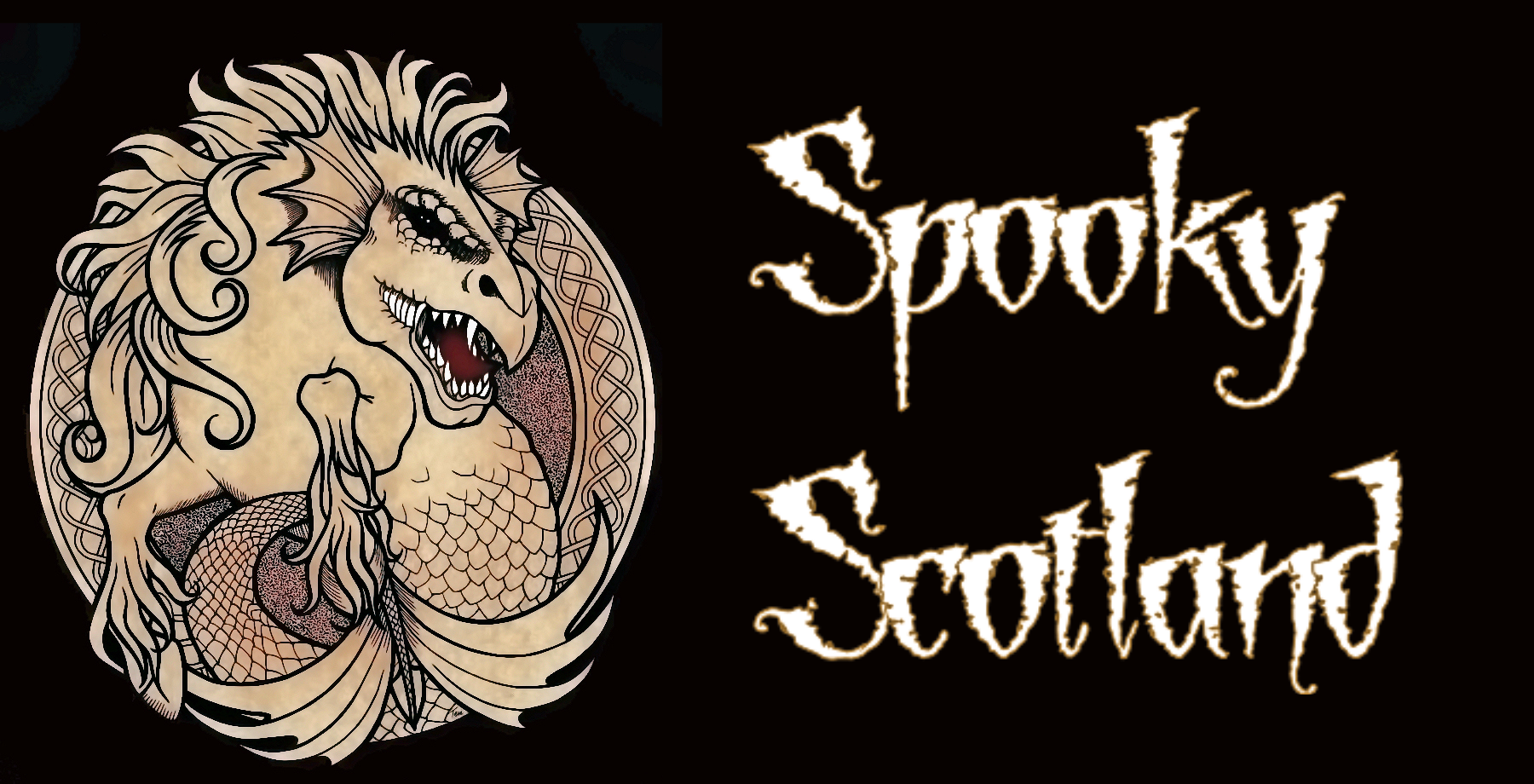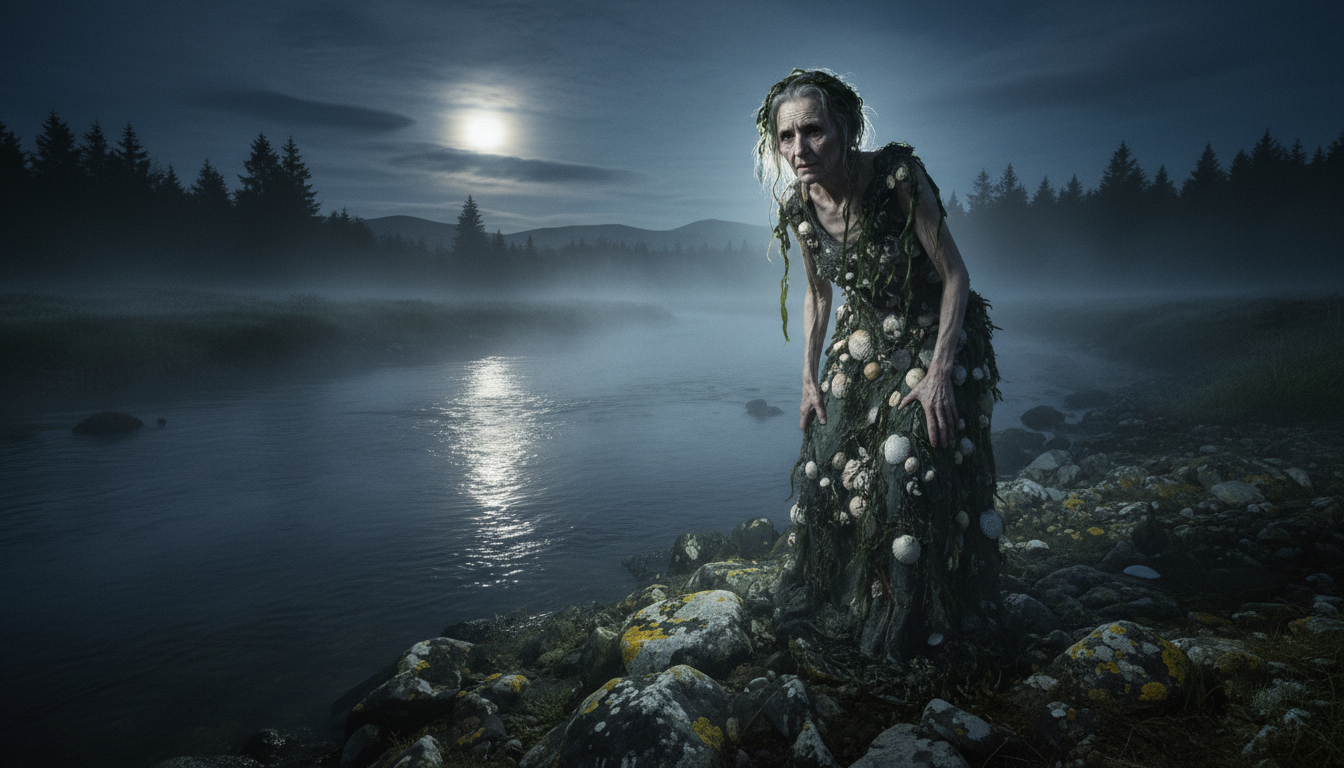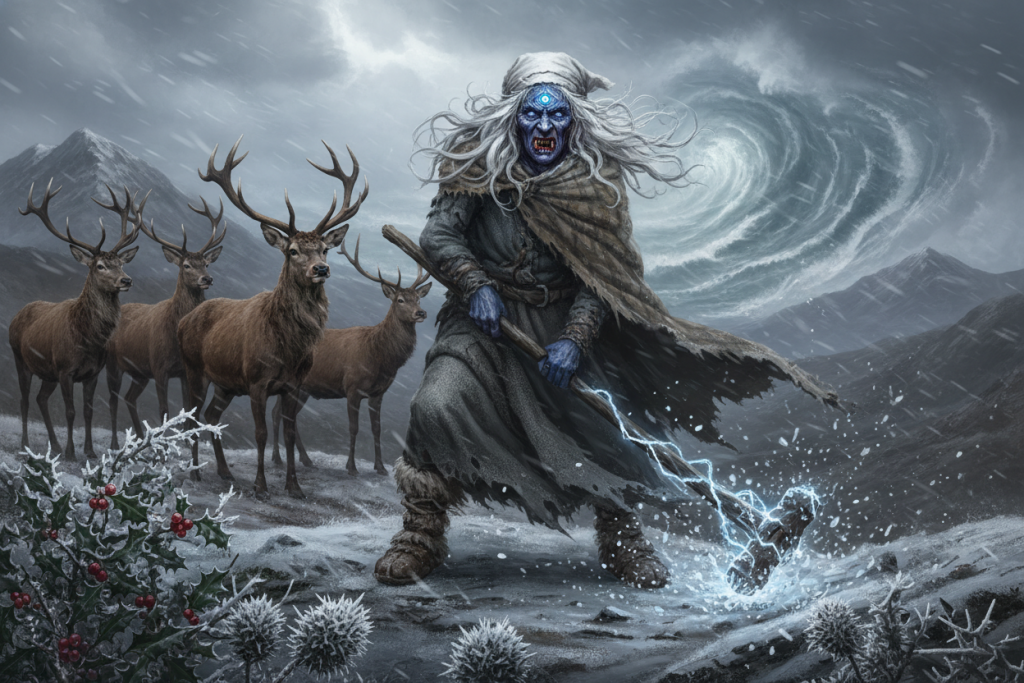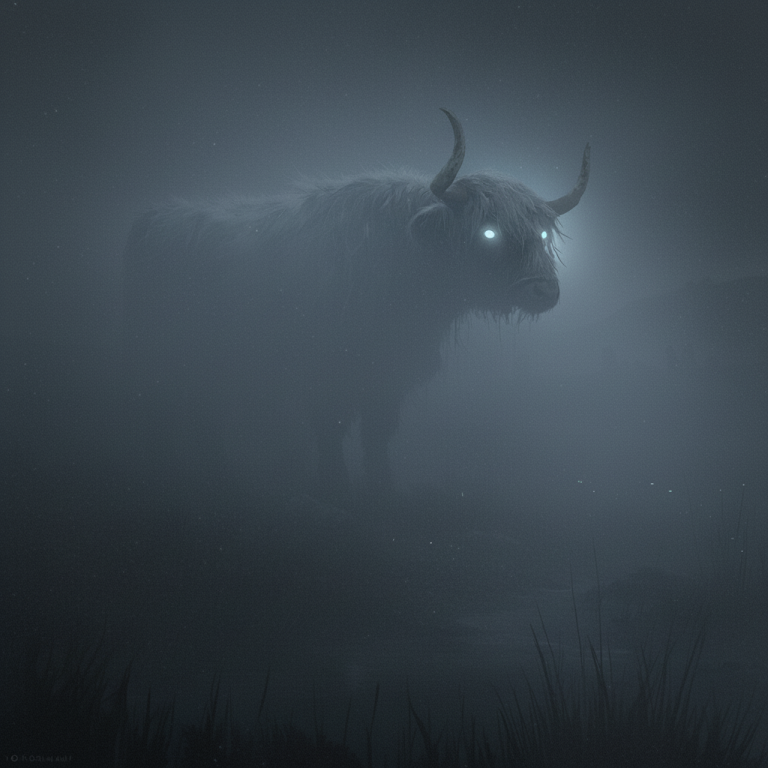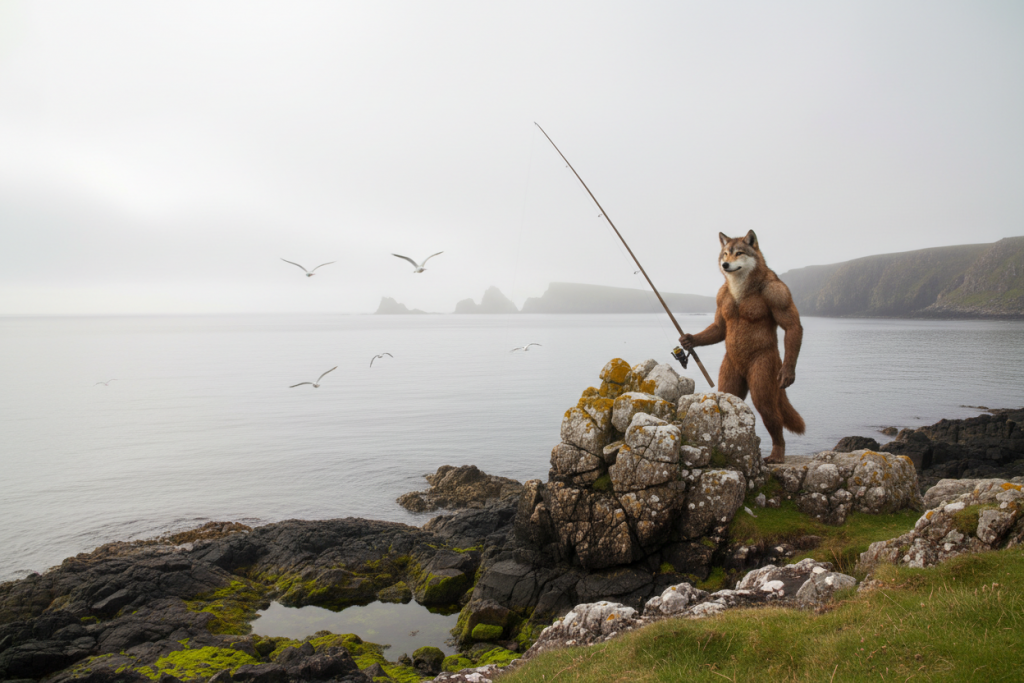Name pronunciation:
Shelly-coat (pronounced SHEH-lee-koht)
General Information:
The Shellycoat is a mythical creature from Scottish and Northern English folklore, said to haunt rivers, streams and coastal waters. It belongs to the world of Celtic fairy folk and spirit beings, often described as a mischievous water sprite or bogeyman. Its name comes from the coat made of shells that covers its body, rattling loudly whenever it moves.
Although sometimes thought of as a water demon, the Shellycoat is generally harmless. Most tales describe it as a trickster that enjoys confusing travellers near water rather than harming them. The creature is linked to legends from places such as the River Hermitage and coastal regions of Scotland.
Appearance:
The Shellycoat’s most defining feature is its coat of shells. These shells clatter and click as it walks, giving away its presence even when it tries to hide. It is usually imagined as a humanoid water-dweller, covered in shells, seaweed and river debris. Some describe it as small and wiry, others as more goblin-like, with a face that shifts between friendly and sly. The sound of shells rattling is said to echo through the quiet banks of rivers just before the creature appears.
Habitat:
Shellycoats are said to inhabit streams, rivers and estuaries in Scotland and the north of England. Their natural homes are damp, shaded areas under bridges or along winding riverbanks. The folklore often places them in the Lowlands, particularly near the River Hermitage. Their close bond with water means they rarely travel far from it, and they are thought to vanish if separated from their wet habitat for too long.
Behaviour:
The Shellycoat is known for its playful and mischievous nature. It delights in tricking people, especially travellers who wander close to the water’s edge. Common tales describe the creature pretending to be a drowning victim, calling out for help. When someone rushes to save it, the Shellycoat bursts into laughter, disappearing in a splash of water and leaving only the sound of rattling shells behind.
Unlike more dangerous spirits such as kelpies, the Shellycoat does not harm its victims. Its pranks are meant to amuse rather than injure. Many people in old Scottish communities saw these antics as reminders to show caution and respect near bodies of water.
Shape-shifting Ability:
In some versions of the legend, the Shellycoat has a limited shape-shifting ability. It can blend into its watery surroundings, appearing almost invisible when submerged. It may take the shape of a human voice or a shimmer in the water to confuse wanderers. However, these transformations are short-lived, bound by the power of the streams it inhabits. The creature cannot stray far from water for long without losing its strength.
Variant:
Jacob Grimm, in Deutsche Mythologie, suggested that the Shellycoat is a form of Scottish goblin rather than a true water spirit. He linked it to the German Schellenrock, or “bell-coat”, a goblin that wears a cloak decorated with tinkling bells. Grimm even described a domesticated version of this being, a mischievous household sprite that helped monks in a monastery for thirty years, asking only for a colourful coat with bells.
This version is quite different from the wild Scottish water sprite of local tales. It highlights how myths travel across cultures, changing to fit new landscapes and beliefs.
Location in Scotland:
The Shellycoat is most commonly associated with the southern regions of Scotland, particularly around the River Hermitage near the Borders. Folklore also ties its name to several coastal locations across eastern and northern Scotland. Place names referencing the Shellycoat can still be found today, reflecting how deeply rooted the creature once was in local storytelling traditions.
Stories / Sightings or Experiences:
The Drowning Trick
One of the most well-known tales describes a traveller walking by the River Hermitage late one night. He heard a desperate cry for help coming from the water. Rushing to the edge, he searched for the drowning soul—but there was no one there. Suddenly, the laughter of the Shellycoat echoed from the darkness, followed by the rattle of shells. The traveller fled in fright, realising he had been the victim of a prank.
The Laughing Bogey at the Bridge
In another story, a fisherman returning home across a narrow bridge heard the familiar clatter of shells behind him. When he turned, he saw nothing but mist over the water. As he hurried along, something tugged playfully at his coat. He ran the rest of the way and later learned the locals believed a Shellycoat haunted that bridge, keeping travellers alert with its harmless games.
Purpose of the Myth or Legend:
The story of the Shellycoat serves several cultural purposes. It reflects people’s respect for natural waters and warns against carelessness near rivers and streams. At the same time, it represents the unpredictable and playful side of nature—a reminder that not every mysterious sound or shadow carries danger.
The Shellycoat also helps explain the fear and fascination humans feel toward the wild. Its laughter and harmless tricks remind listeners that nature can be mischievous without being cruel. In many ways, the Shellycoat is a symbol of how folklore blends humour, caution and wonder to make sense of the natural world.
